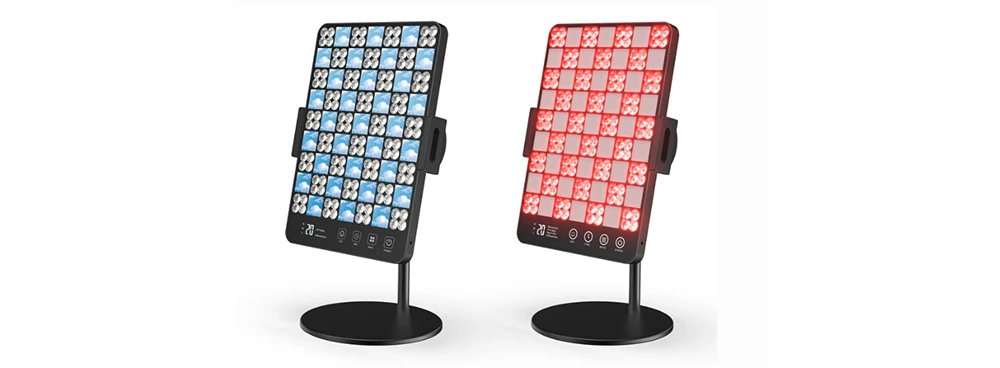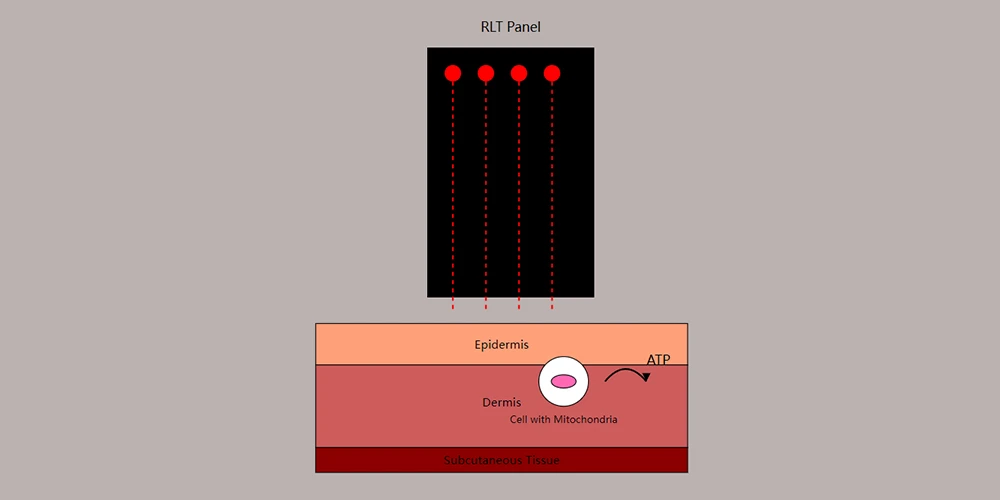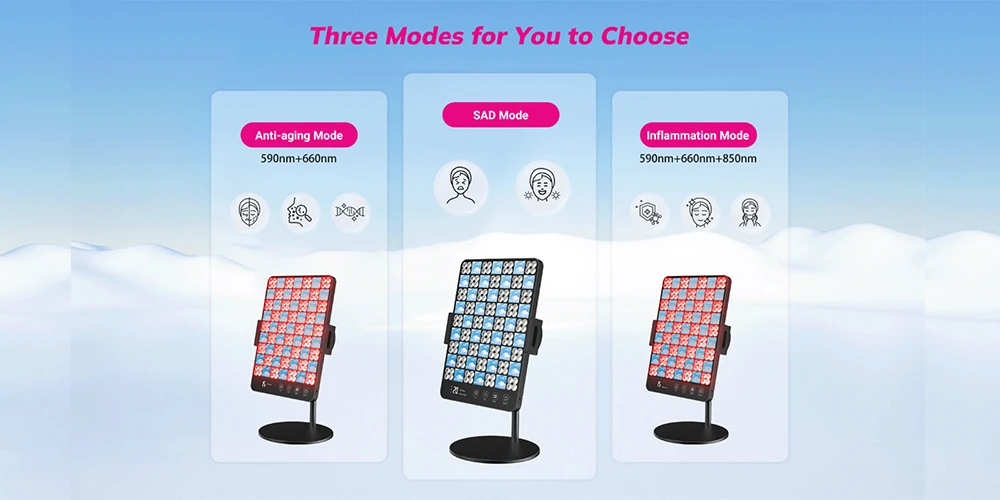Red Light Therapy Panels 101: Everything You Need to Get Started
Have you heard about RLT (Red Light Therapy)? This non-invasive treatment can improve your skin, relieve pain, and enhance your overall wellness. And the best part is you can enjoy these benefits at home.
Red light panels, among the most popular devices, are versatile enough for both facial and body use. Sounds good, right? However, with the abundance of options available, selecting the right red light panel can be confusing.
In this comprehensive guide, we’ll break down everything you need to know to get started with red light therapy panels.
What are red light therapy panels?
Red light therapy panels are innovative devices that utilize LED technology to emit targeted wavelengths of red and near-infrared light. Typically designed as flat, rectangular units, these panels contain numerous LEDs that deliver these beneficial light wavelengths effectively. Available in various sizes, red light therapy panels are engineered to optimize exposure across different areas of the body. This exposure enhances cellular energy production and may promote a range of health benefits, making them a valuable tool for wellness and recovery.

How RLT panels work
RLT panels contain an array of LEDs (Light Emitting Diodes) that emit both red light (ranging from 600nm to 700nm) and near-infrared light (from 800nm to 850nm). When you position yourself in front of the panel, the emitted light penetrates your skin at varying depths. This light is absorbed by photoacceptors within your cells, with a primary focus on the mitochondria.
As the mitochondria absorb this light energy, they become stimulated, leading to an increase in the production of ATP (adenosine triphosphate), the essential energy currency of cells. Enhanced ATP production can result in a variety of beneficial effects, including improved cellular energy and function, increased production of anti-inflammatory mediators, and enhanced blood circulation.

How to choose the best RLT panels
The best RLT panels are defined as having different requirements and needs. Here are some main factors to consider when choosing RLT panels.
Light wavelength
Red and near-infrared light offers distinct benefits for your skin. Red light is highly effective for surface-level treatments, making it ideal for skin rejuvenation and wound healing. On the other hand, near-infrared light penetrates deeper into the tissue, helping with muscle recovery, joint pain, and inflammation.
Red light therapy panels that combine both red and near-infrared light deliver enhanced results, as they target multiple layers of the skin and underlying tissues. That is why most RLT panels on the market feature red light wavelengths between 600nm and 700nm, and near-infrared light ranging from 800nm to 850nm.
Some advanced panels, like our RLA02 model, also include 590nm yellow light, which further stimulates collagen production and promotes deeper skin regeneration, providing a more comprehensive approach to skin health and recovery.

Irradiance
Irradiance, or power density, is a key feature of red light therapy (RLT) devices, measured in milliwatts per square centimeter (mW/cm²). A higher irradiance indicates that more light energy is being delivered to your cells, which can enhance therapeutic effects. However, higher irradiance doesn’t always equate to better results. Excessive exposure can potentially irritate the skin, leading to redness or discomfort.
For optimal home use, the recommended irradiance level typically falls between 30 and 100 mW/cm². This range provides effective results while allowing for shorter treatment sessions. It balances safety and efficacy for improved skin health and recovery.
Size and treatment area
Are you looking to use RLT panels to treat specific painful spots, or to enhance the overall health of your entire body? It's important to consider where and how you'll primarily use the panel.
Larger panels can cover a broad area in one session, making them ideal for full-body treatments. But they tend to be more expensive and may require more space for storage. Smaller panels, on the other hand, are more affordable, and easier to place anywhere in your home. They are also highly effective for targeting specific areas, offering a focused approach for treating localized issues.
Flexibility and design
The experience is an important factor when choosing an RLT panel. Additional features such as remote control and timers can greatly enhance convenience and make the panels easier to use. A better experience encourages more consistent use, maximizing the benefits of your therapy.
Here are some common features that add flexibility and improve usability:
- Remote control: Allows you to operate the panel from a distance.
- Touch screen control: Simplifies operation with an intuitive, easy-to-use interface for quick adjustments.
- Timer functions: Enable you to set specific treatment durations, ensuring accurate and consistent sessions.
- Intensity adjustment: Let you tailor the light intensity to your comfort and specific treatment needs.
- Safety features: Important safety elements like automatic shut-off and eye protection help prevent overexposure and ensure safe usage.
Certifications
While there isn’t a specific, universally recognized certification for red light therapy panels, several relevant certifications can indicate the quality and safety of a product.
If a product is sold in United Stated, it should be cleared or registered with the Food and Drug Administration (FDA). This means it has met certain safety and efficacy standards.
ISO 9001 certification signifies a company's commitment to maintaining high-quality management practices across its operations. Additionally, ISO 13485 focuses specifically on quality management systems for medical devices, ensuring that the product is manufactured to meet the strict requirements of the healthcare industry.
These certifications provide reference that the red light therapy panel meets rigorous standards for both performance and safety.
How to use RLT panels
We previously explained how to use RLT masks, and the process is quite similar to using RLT panels. To ensure safety during your sessions, always begin by wearing protective goggles to shield your eyes from the intense light.
Next, position the light panels in a stable and secure location. Make sure the panel is set at a height that allows you to stand or sit comfortably in front of it. The recommended distance between the panel and your skin will vary depending on the type of panel, but typically it ranges from 15 to 60 cm.
For optimal results, start with sessions lasting 10 to 20 minutes, about 3 to 5 times per week. Gradually adjust based on your comfort and the guidelines of the specific device you're using.
Disclaimer: This blog is for educational and entertainment purposes only and is not intended to be used for medical diagnosis, treatment, or prevention of any disease, illness, or health problem.

